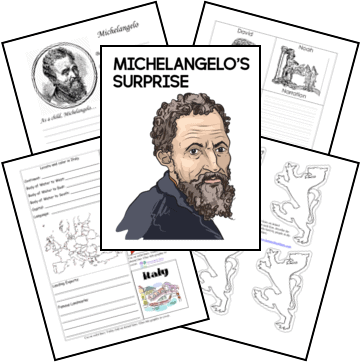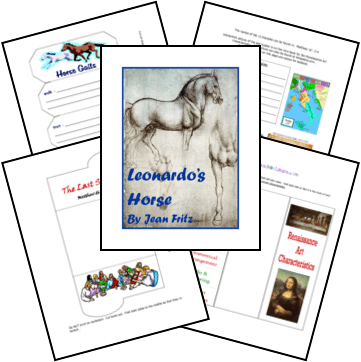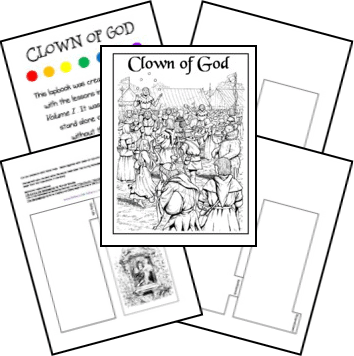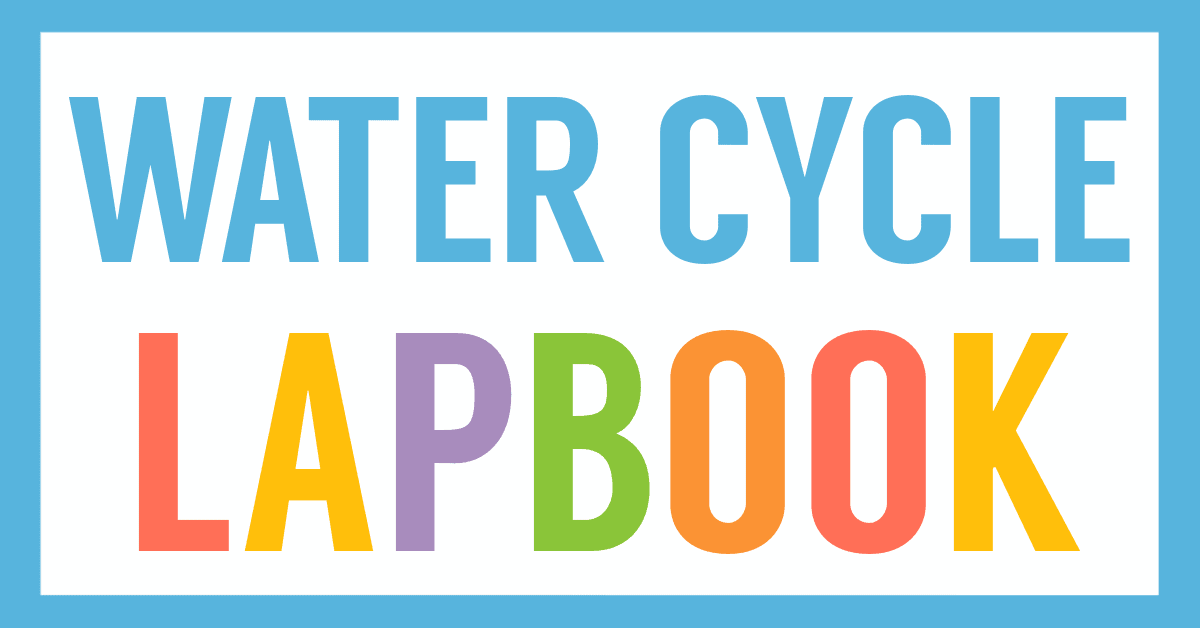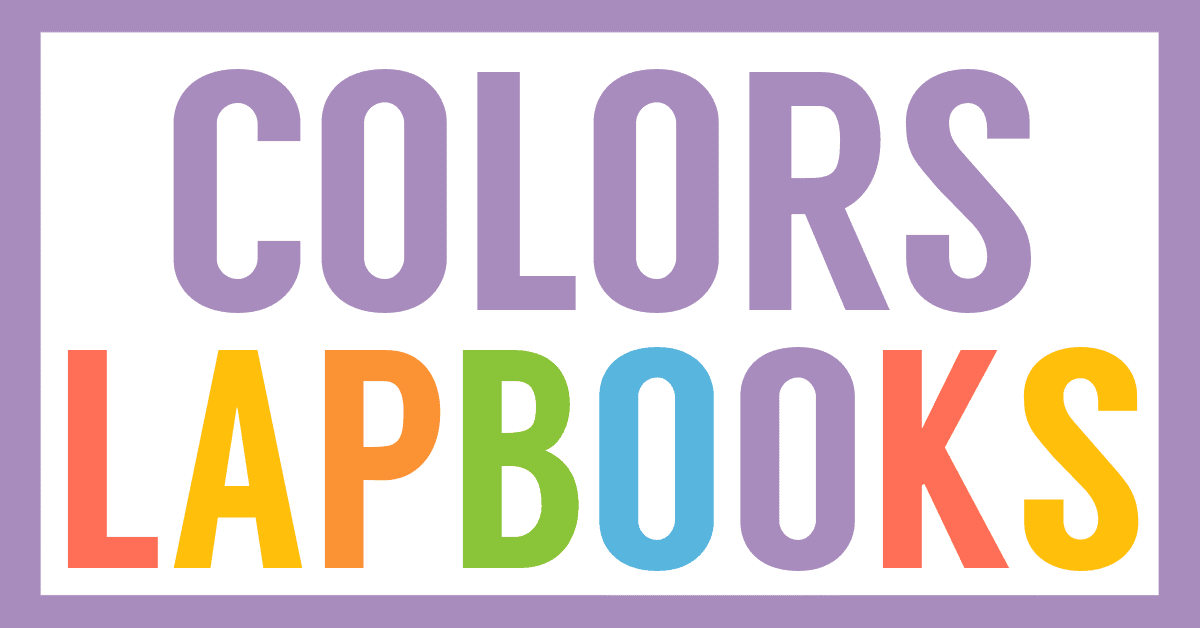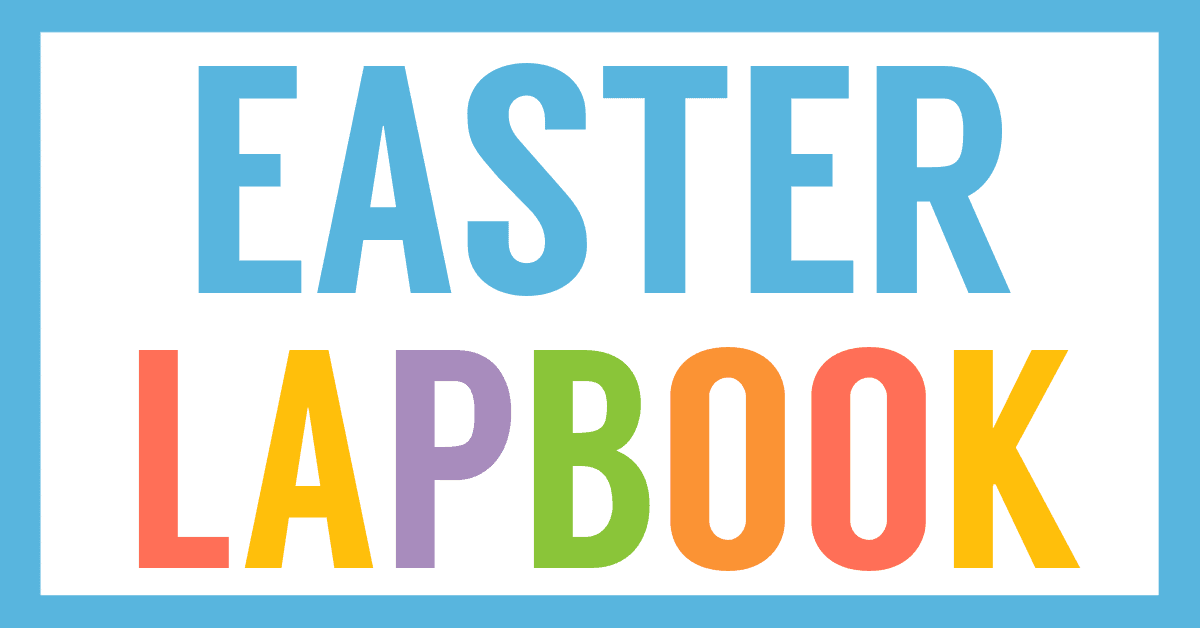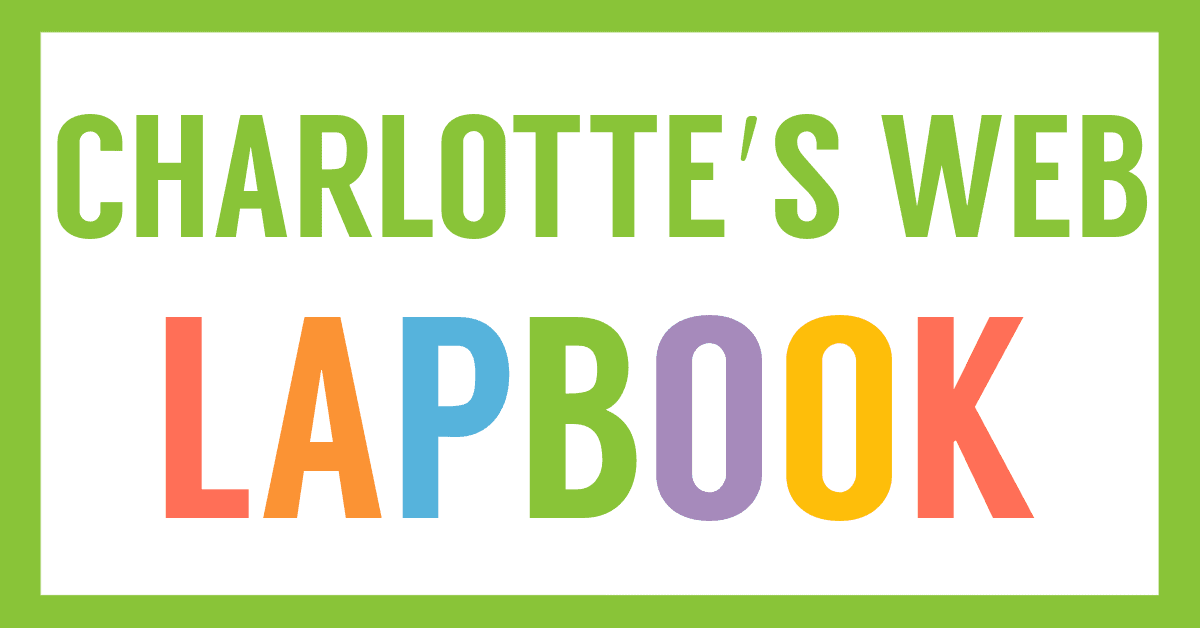Affiliate Disclaimer
We sometimes use affiliate links in our content. This won’t cost you anything, but it helps us to keep the site running. Thanks for your support.
Piero, a page in the Medici court in fifteenth-century Florence, hunts through the palazzo for his father and finds him helping the artist Michelangelo sculpt a snowman.
This story, Michelangelo’s Surprise, is a fantastic springboard into a variety of lessons. Grab our Michelangelo’s Surprise unit study and lapbook and learn all about the life and times of one of the world’s most famous artists.
Thanks to Wende for writing the lessons and creating the printables for this Michelangelo’s Surprise unit study.
Michelangelo’s Surprise Unit Study Lessons
This unit study includes lessons and printables based on the book Michelangelo’s Surprise by Tony Parillo.
Note: This book is hard to find, but you could try to use your library’s interlibrary loan program, or you could listen to it being read here.
Here are some sample lessons from the Michelangelo’s Surprise Unit Study.
History: The Renaissance
This story takes place in 1494, two years after Columbus sailed to America, during the Renaissance. The Renaissance was a period of revival beginning in Italy towards the end of the fourteenth century and spreading through Europe. It bridged medieval to modern times. The word “Renaissance” means “rebirth” in Latin. This period in history is marked by a renewed interest in learning, exploration, and fine arts. The people of Europe were ready for a “rebirth” for a few key reasons.
1. The Plague had wiped out 25% of the population, rich and poor, young and old. People could be more selective about the work they took on, elevating the value of the serfs. Watching so many people die, people also began to rethink their spiritual lives and turned away from the State Church.
2. The invention of gunpowder helped to bring an end to feudalism. The castles were no longer effective for protection so new styles of palaces were built. Individual City-States were better equipped to defend themselves against a tyrannical central government. 3. Towns began to develop and people bought and sold many goods and services. As people became wealthier, the middle classes relied less and less on the rich and desired to educate themselves. With the invention of the printing press in the mid 1400’s, the education of oneself became much easier.
Geography: Florence, Italy
This story takes place in Florence, Italy. Have your child locate Italy on a world map, located on the continent of Europe. Have him locate the capital city, Rome. Have him also locate the city of Florence, in the northern part of the country. What bodies of water are to the east, west, and south of Italy?
Italy is a boot-shaped peninsula surrounded on three sides by water, so boats were able to go to almost any part of the country. This made it easier for the people of Italy to trade their products with others, which brought lots of new cultures to the land. (Mention the monkeys found throughout the story, which most likely came from Africa or Asia). The people of Italy speak Italian. Italy is the world’s leading wine maker, and also manufactures and exports cars, textiles, and tobacco.
Years ago, during the Renaissance, countries were divided into city-states. A city-state was a sovereign state consisting of an independent city and its surrounding territory, comparable to the states in the United States. One such city-state was Florence. The Renaissance thrived in Florence thanks in large part to the wealthy Medici family.
Look at the picture of the domed building on the first page of text. This is an actual building still standing today in Florence, Italy. There is an interesting story about the building of this cathedral, called the Duomo. The architect working on the project died before the dome was completed. Nobody knew how to build such a dome, and he didn’t leave any instructions. So Florence had a contest to see who could submit the best plans for finishing the dome. A man named Brunelleschi won, because his plan said the dome could be built without a wooden center structure, saving the city-state a lot of money. The dome was built of brick, with ribs of stone running down from the top, dividing the dome into eight sections. It had a little tower on the top, called a cupola. Eventually, a statue of Brunelleschi was built right outside the dome.
On the last page of text is a detailed picture of the Medici palace. From the outside, the building looked more like a fort than a palace. This was because there was a lot of fighting going on, and with the invention of gunpowder, the old style castles just wouldn’t do. The lower story was built of heavy rough stones to make the building strong and solid. Lower windows had iron bars. Inside, it looked more like a palace. In the center was an open courtyard with balconies all around it. Then there was a huge banqueting hall, a library, and other finely furnished rooms. The Medici family lived in this palace until 1494.
You can grab a copy of the entire Michelangelo’s Surprise Unit Study and Lapbook in an easy-to-print file at the end of this post.
Michelangelo’s Surprise Lapbook Printables
In addition to the unit study lessons, this file includes a huge variety of mini-books and printables.
- Adding -Ing Tab Book
- Apostrophe Simple Fold
- Compound Words Mini-book
- Artwork Simple Fold
- Flag of Italy Simple Fold
- Italy Shutterfold Book
- Florence Shutterold
- Duomo Shape Book
- Piero Medici Accordion Book
- Medici Family Flap Book
- Looking for Renaissance Art Activity Cards
- Medici’s Art Envelope Fold
- Michelangelo Notebook Page & Report Pocket
- Creation of Adam Narration Accordion
- Pieta Narration Accordion
- David Narration Accordion
- Noah Narration Accordion
- And more!
How to Get Started with Your Michelangelo’s Surprise Unit Study & Lapbook
Follow these simple instructions to get started with the Michelangelo’s Surprise Unit Study:
- Buy a copy of the book, Michelangelo’s Surprise, or borrow one from your local library. Note: This book is hard to find, but you could try to use your library’s interlibrary loan program, or you could listen to it being read here.
- Print the Michelangelo’s Surprise unit study.
- Choose the lessons you want to use with your student (a highlighter works great for this).
- Choose and prepare the lapbook printables you want to use with your student.
- Enjoy learning all about Michelangelo.
Get Your Free Michelangelo’s Surprise Unit Study & Lapbook
Simply click on the image below to access your free Michelangelo’s Surprise Unit Study and Lapbook.

